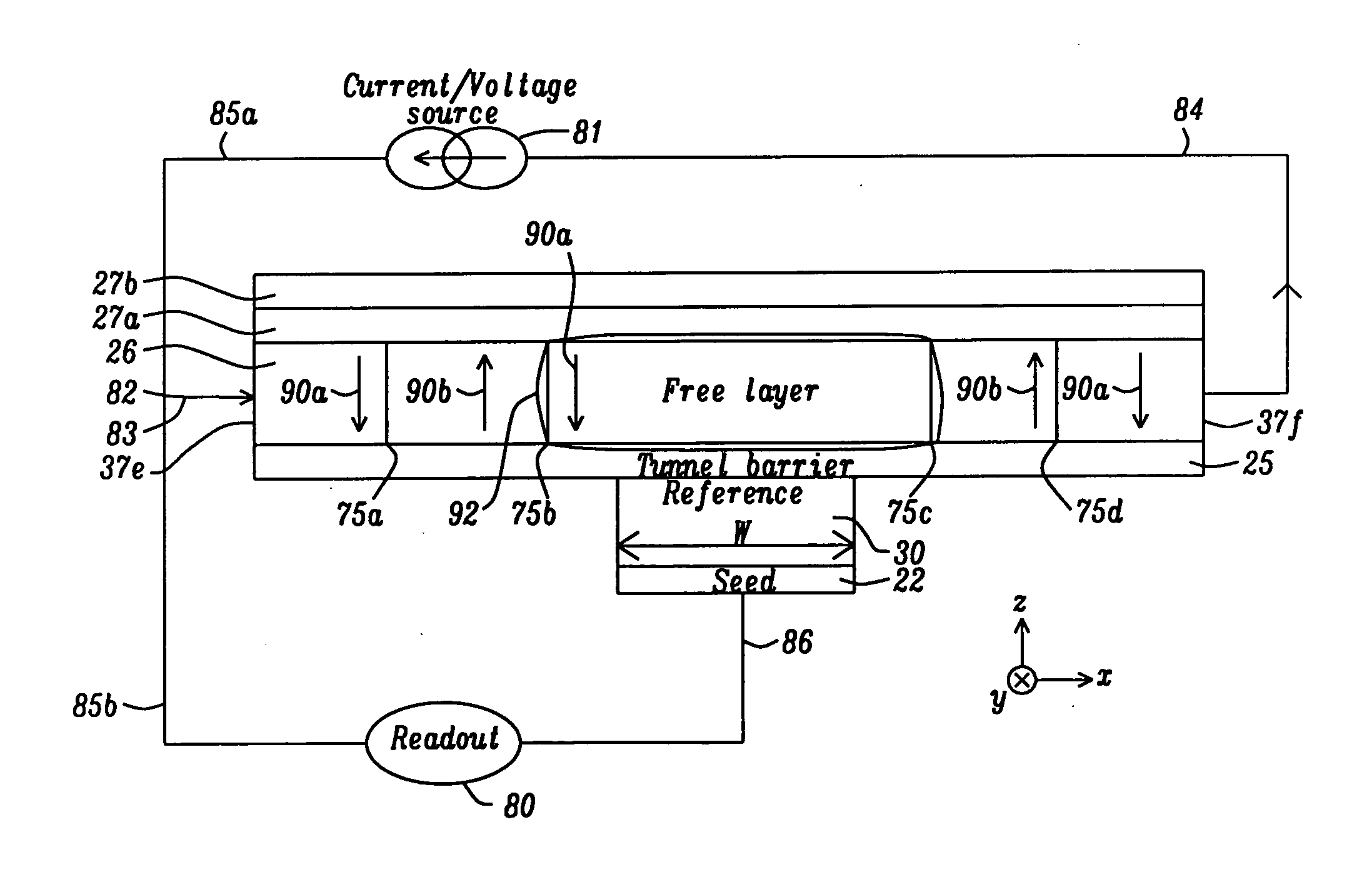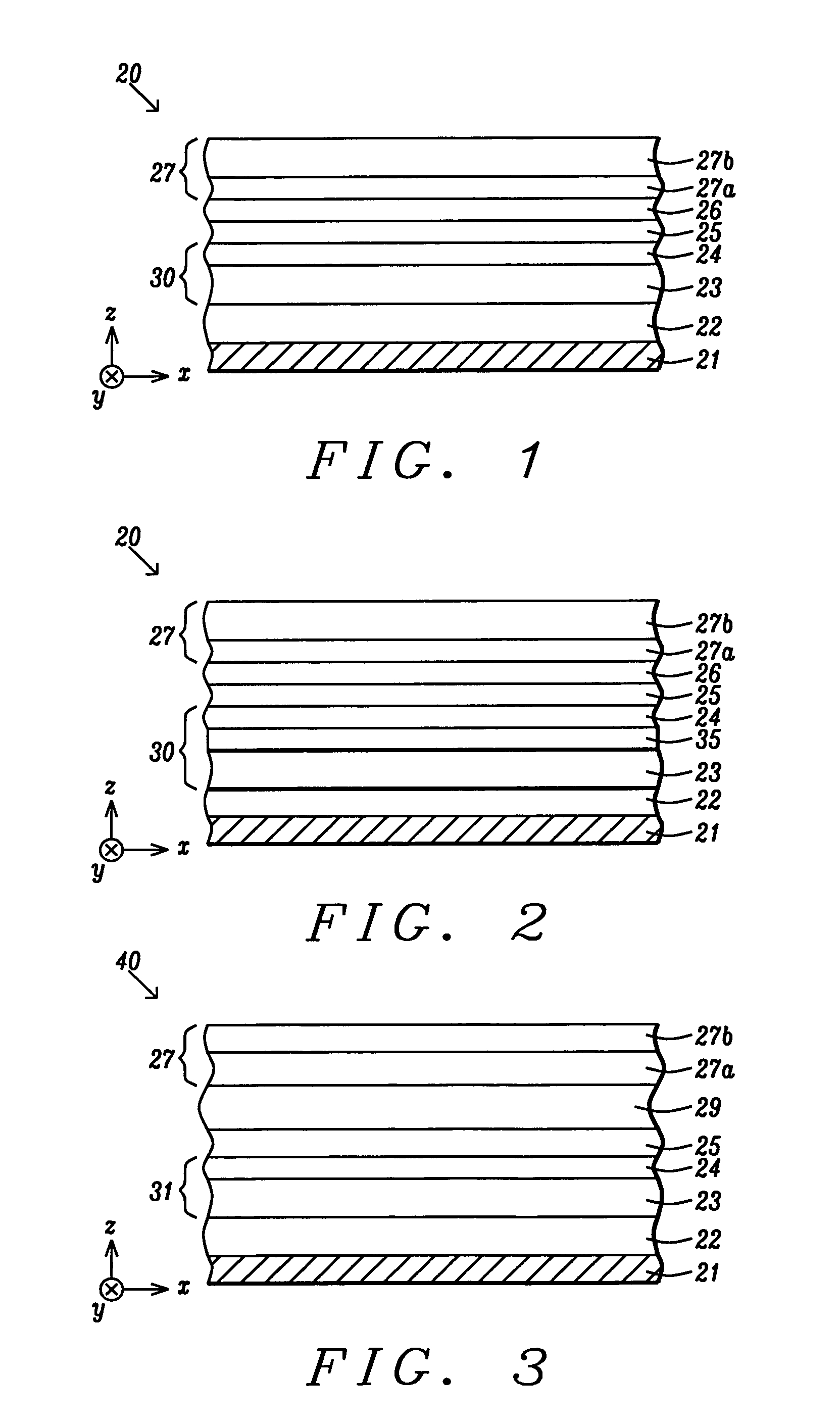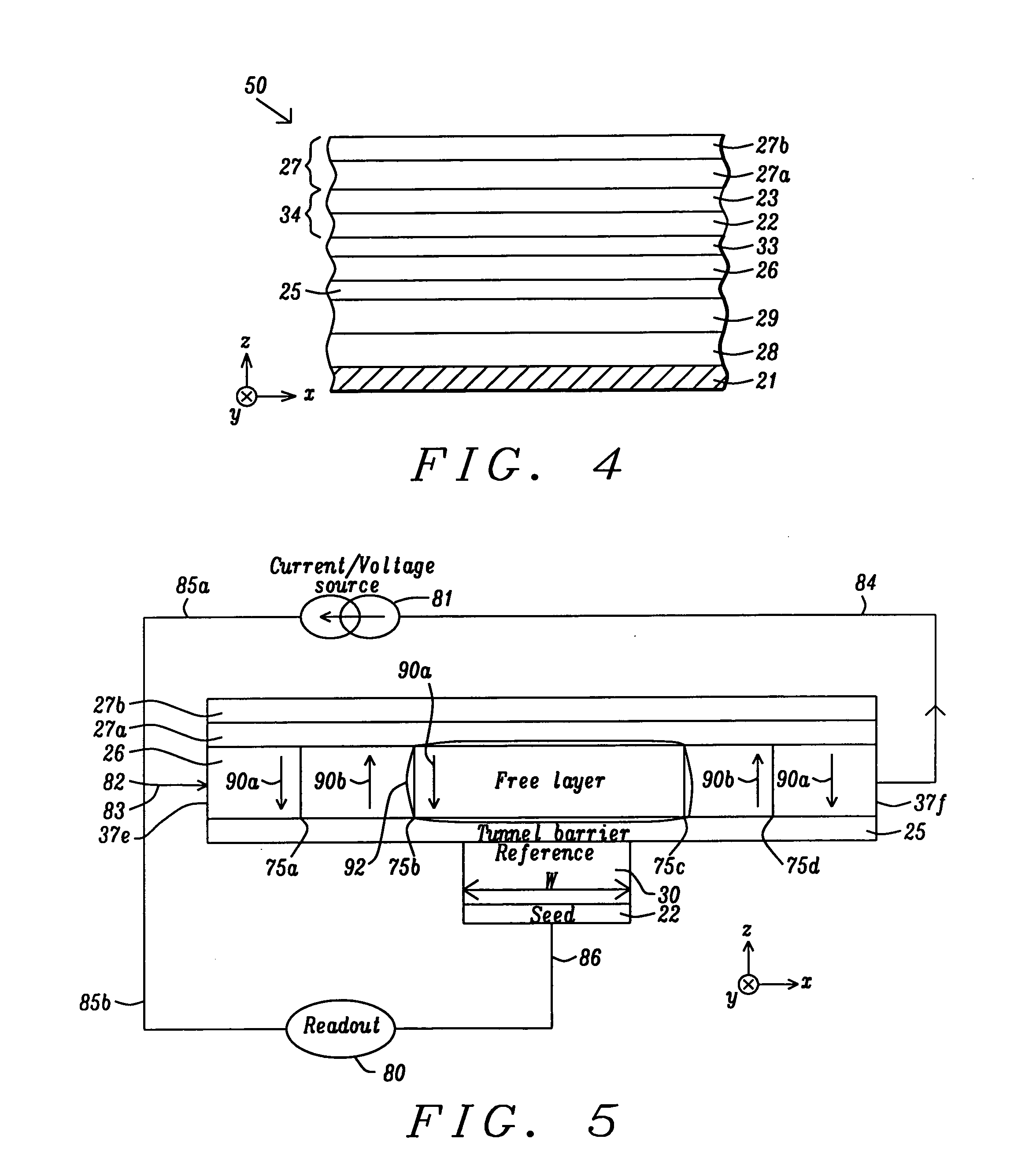Co/Ni multilayers with improved out-of-plane anisotropy for magnetic device applications
a magnetic device and multilayer technology, applied in the field of magnetic devices, can solve the problems of high temperature not being practical for device integration, affecting the integration of spintronic devices, and affecting the stability of magnetic devices, etc., and achieves the effects of strong (111) texture, improved mr ratio, and improved magnetic device stability
- Summary
- Abstract
- Description
- Claims
- Application Information
AI Technical Summary
Benefits of technology
Problems solved by technology
Method used
Image
Examples
example 1
[0052]An experiment was performed to demonstrate the advantage of a seed layer in improving PMA in an overlying (Co / Ni)n multilayer stack according to the present invention. A partial and unpatterned spin valve stack comprised of a seed layer, a (Co / Ni)10 laminated layer where each Co layer is 2.5 Angstroms thick and each Ni layer is 6 Angstroms thick, and a Ru cap layer was fabricated in order to obtain PMA values from M-H curves using a vibrating sample magnometer (VSM). All samples were annealed at 350° C. for 1 hour. In FIG. 6a, less than ideal seed layers such as TaN, PtMn, NiFe, and Ru were employed. In FIG. 6b, 100 Angstrom thick NiCr and Hf seed layers were formed according to the present invention to provide improved performance including squarer M-H loops and higher coercivity (higher PMA) as depicted in curves 41, 42, respectively, compared with the films grown on the inadequate seed layers in FIG. 6a. Note that a greater distance between the vertical sections of each pai...
example 2
[0054]To further demonstrate the benefits of the present invention according to a first embodiment where the composite seed layer / laminated PMA layer is formed as a reference layer in a MTJ suitable for spin-torque MRAM devices, a MTJ stack was fabricated as represented in the following stack of layers where the number following each layer is the thickness in Angstroms: Si / SiO2 / Ta50 / Hf20 / NiCr100 / (Co2.5 / Ni6)10 / Co20Fe60B206 / MgO / Co20Fe60B2012 / Ta20 / Ru. In the aforementioned structure, Si / SiO2 is the substrate, Ta is a bottom electrode, Hf / NiCr is a composite seed layer, (Co / Ni)10 is the laminated PMA portion of the reference layer, CoFeB is the transitional magnetic layer adjoining a MgO tunnel barrier, CoFeB is the free layer, and Ta / Ru is the capping layer. Thus, (Co / Ni)10 / Co20Fe60B20 serves as a composite reference layer to provide a high MR ratio wherein the CoFeB portion is thin enough to preserve the PMA property and thick enough to generate a high MR ratio because of cohesive tun...
example 3
[0056]According to a third embodiment of the present invention, the composite seed layer / laminated PMA layer as described previously may be incorporated as a dipole layer in a MTJ represented in the following stack of layers: Si / SiO2 / Ta50 / NiCr100 / Co20Fe60B203 / MgO / Co20Fe60B2012 / Ta10 / NiCr 20 / (Co2.5 / Ni6)10 / Ru. In the aforementioned structure, Si / SiO2 is the substrate, Ta50 is a 50 Angstrom thick bottom electrode, NiCr100 is a 100 Angstrom thick seed layer, CoFeB / MgO / CoFeB is a reference layer / tunnel barrier / free layer configuration, and Ta10 is non-magnetic spacer with a 10 Angstrom thickness between the free layer and a 20 Angstrom thick NiCr underlayer for the laminated PMA structure which is (Co / Ni)10. Ru is a capping layer.
[0057]Referring to FIG. 9, a M-H loop measurement is depicted that shows magnetization in a direction perpendicular to the film plane of the layers in the aforementioned MTJ stack having a dipole layer. In this case, the dipole layer and free layer both have PMA ...
PUM
 Login to View More
Login to View More Abstract
Description
Claims
Application Information
 Login to View More
Login to View More - R&D
- Intellectual Property
- Life Sciences
- Materials
- Tech Scout
- Unparalleled Data Quality
- Higher Quality Content
- 60% Fewer Hallucinations
Browse by: Latest US Patents, China's latest patents, Technical Efficacy Thesaurus, Application Domain, Technology Topic, Popular Technical Reports.
© 2025 PatSnap. All rights reserved.Legal|Privacy policy|Modern Slavery Act Transparency Statement|Sitemap|About US| Contact US: help@patsnap.com



